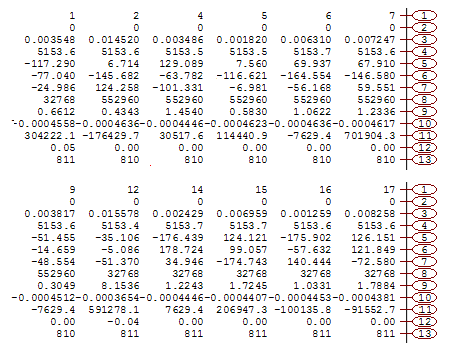The Trimble 4D Control Server Storage module can be set up to store almanac files in the format AlmaDDD.YYa, where DDD refers to the day of year, and YY represents the year.
The almanac file contains the following information:

Each column holds the almanac information for a specific satellite.
The parameters in each column are:
Row number |
Parameter |
Description |
|---|---|---|
1 |
|
Internal Satellite IDs (see section Satellite numbers) |
2 |
|
Health indicator |
3 |
e |
Eccentricity |
4 |
Ö a |
Square root of semimajor axis |
5 |
W |
Right ascension of ascending node [°] |
6 |
w |
Argument of perigee [°] |
7 |
M |
Mean anomaly [°] |
8 |
toa |
Time of almanac in GPS seconds [sec] |
9 |
i |
Inclination offset to 54° [°] |
10 |
dW/dt |
Rate of right ascension [°/sec*1000] |
11 |
a0 |
Satellite clock offset [nsec] |
12 |
a1 |
Satellite clock drift[nsec/s] |
13 |
|
GPS week |
For the identification of satellites, regardless of the system they belong to, Trimble uses two- or three-digit numbers. The following table associates the satellite IDs used in the almanac file to the satellite systems. In each row, the lowest almanac file ID is associated with the lowest satellite ID used in the respective satellite system.
ID in almanac file... |
Satellite system |
|---|---|
1...37 |
GPS |
38...64 |
GLONASS |
111...118 |
QZSS |
201...263 |
Galileo |
264...283 |
Beidou |